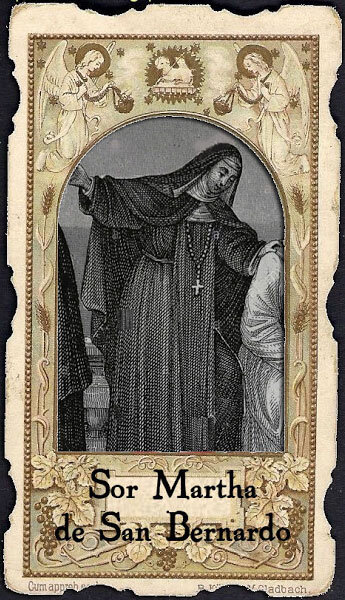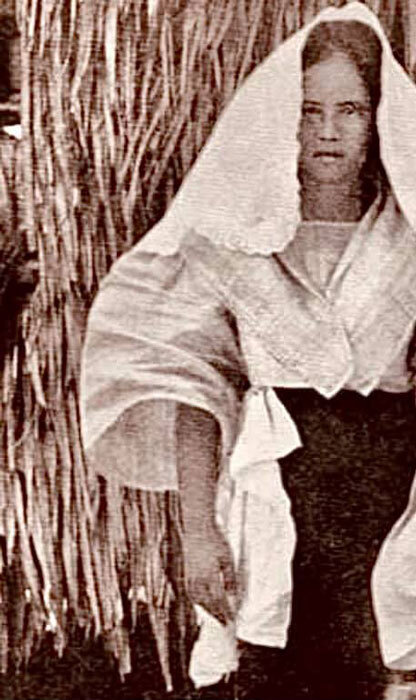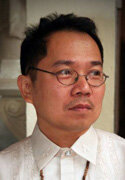Give This Pampangueña a Memorial in the West Philippine Sea
/Sor Martha de San Bernardo (Source: Kaplistorian.blogpsot.com)
How she became a nun should inspire girls to not just pursue their dream, but also to fight for it—courageously and relentlessly, until ceilings crack, walls collapse, and the mountains themselves come and kneel before you can say, “Go girl!”
All Filipino nuns—from the contemplative to the radical—are nuns today only because nearly 400 years ago, Martha, a native Kapampangan woman, fought racial discrimination to become the first Filipino nun in Philippine history.
Since the early 1600s, native women had been knocking at monastery doors and rattling abbey gates for admission in religious orders, but their pleas had fallen on deaf ears. One applicant, however, was let in, because she had great persistence and more importantly, timing: she applied to the Royal Monastery of Santa Clara in Intramuros right after numerous Kapampangans had enthusiastically participated as witnesses in the cause of beatification of the monastery’s foundress, Madre Jeronima de la Asuncion. Pampanga, at the time, was also considered the colony’s “New Spain” and Kapampangans as “the Castilians among the Indios” because they seemed most appreciative of Spanish culture.
“All Filipino nuns—from the contemplative to the radical—are nuns today only because nearly 400 years ago, Martha, a native Kapampangan woman, fought racial discrimination to become the first Filipino nun in Philippine history.”
Martha was accepted for training and quickly stood out not just for her brown skin (everyone else was Spanish or Spanish mestiza), but also for her extraordinary virtues and leadership. One Franciscan chronicler wrote, “She was so influential a woman and so moral and virtuous that all the nuns urged their superiors to immediately confer on her the novitiate habit.” However, because she was a native, she was still not considered worthy to become a full-fledged member of the Poor Clares.
But the Spanish nuns who liked her thought of a way to circumvent the prohibition in Manila by assigning her to their newly opened monastery in Macau. The moment their ship sailed across the South China Sea (now West Philippine Sea), beyond the reach of Spanish laws and prejudices, her superiors conferred on her the Poor Clares’ habit—thus making her the first Filipino nun, in 1632.
The Franciscan priests in Manila who had actually connived with the Poor Clares later faced the wrath of their superiors, but they lied that they had no knowledge of the plan and correctly argued they had no more jurisdiction over an incident that happened in the middle of the sea.
Sor Martha de San Bernardo never returned to the Philippines, but her trailblazing, game-changing act paved the way for other native women to break into exclusive religious congregations or establish their own, like what Ignacia del Espiritu Santo did more than 50 years later (in 1684) when she founded the RVM (Religious of the Virgin Mary, which excluded non-natives - talk of the shoe being on the other foot!). Likewise, Kapampangan sisters, Dionisia and Cecilia Talangpaz, founded the Augustinian Recollect Sisters, the first non-contemplative congregation for women in the Recollect Order in the world.
A Filipina during Spanish times (Source: Pinterest)
Sor Martha de San Bernardo deserves to be memorialized by way of an NHCP marker, to be erected in the middle of the West Philippine Sea, maybe on one of the disputed islands there?
Reposted from the author’s Facebook page.
Reference: "Kapampangan Pioneers in the Philippine Church 1592-2001 by Dr. Luciano Santiago (Holy Angel University Press).
Robby Tantingco is the Director of the Center for Kapampangan Studies and Vice President for External Affairs of Holy Angel University. He is the author of "Destiny and Destination" and "Pinatubo: The Volcano in our Backyard" which won a National Book Award.
Click here for more articles by Robby Tantingco





